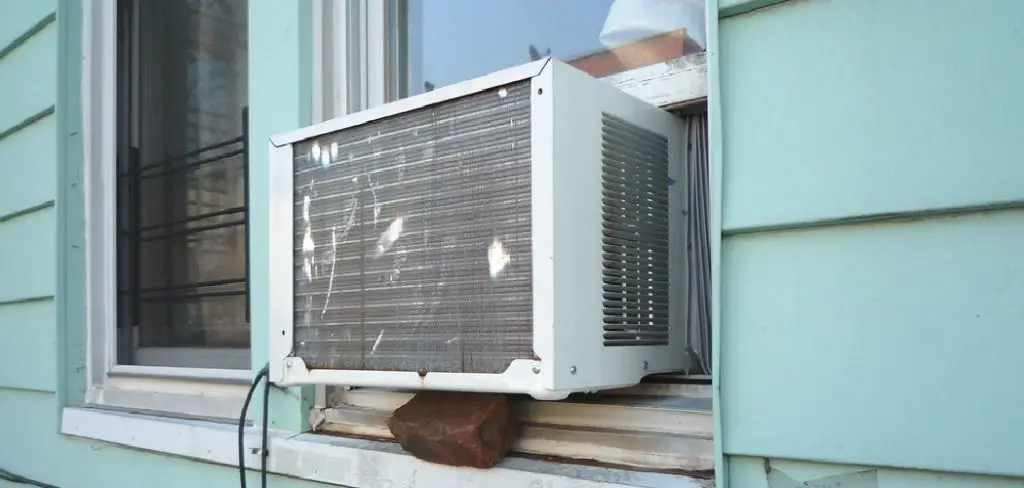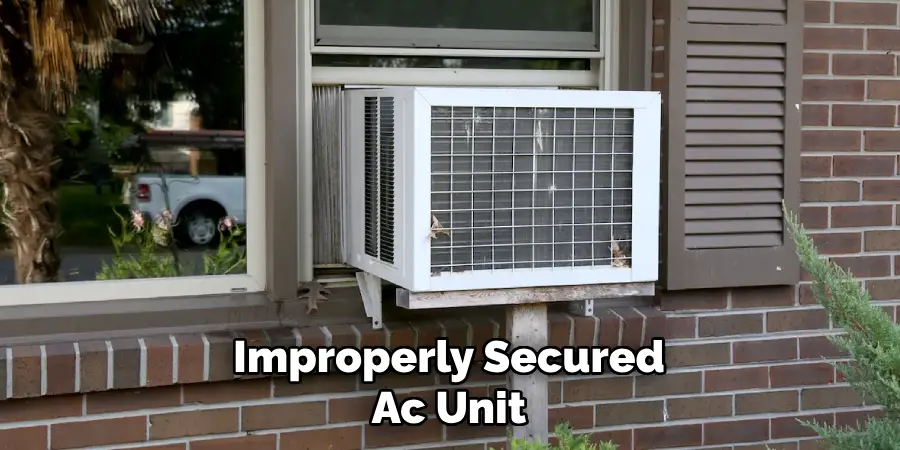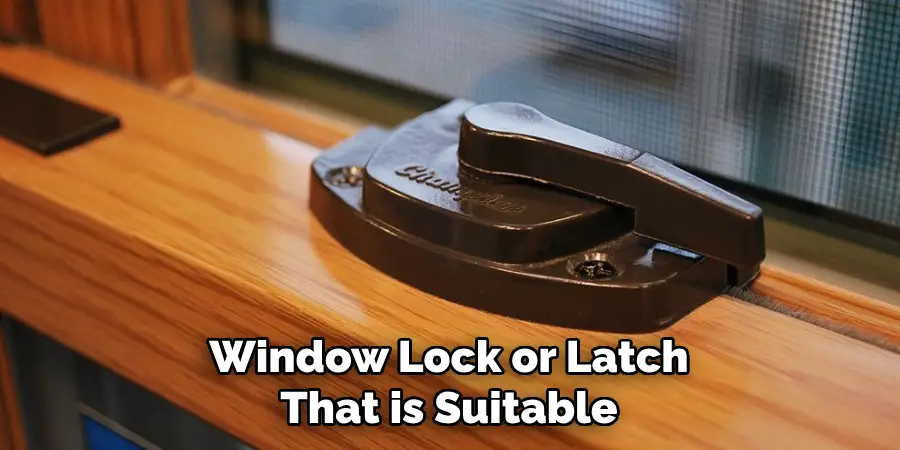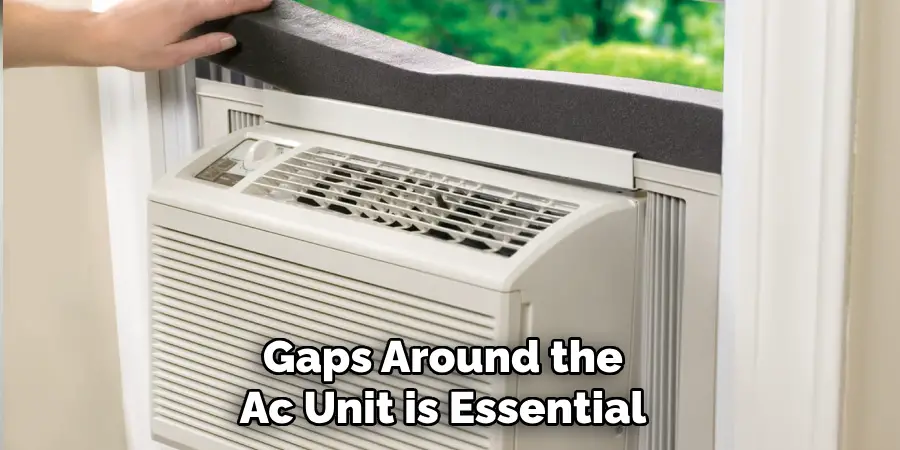Securing a window with an AC unit installed is a crucial task to ensure both comfort and safety. Window-mounted air conditioning units are a popular choice for those looking to cool individual rooms without central air, but they can also create a vulnerable point of entry if not properly secured. Understanding “how to lock a window with an AC unit” is essential for preventing unauthorized access and potential break-ins.

A securely installed AC unit not only prevents burglars from exploiting gaps around the unit but also ensures that it remains stable during use, reducing the risk of accidents. Furthermore, a tightly locked window adds an additional layer of peace of mind, knowing that your home is safeguarded against potential intrusions. This guide will provide comprehensive steps and tips on how to securely lock a window with an AC unit, ensuring your home remains cool and secure.
Understanding Window AC Units
Types of Window AC Units
Window AC units come in various types, with the most common being single-hung, double-hung, and sliding units. Single-hung units are typically installed in windows where the bottom pane moves up and down. These units are straightforward to install by simply lifting the window, placing the AC unit into the frame, and closing the window onto the unit to hold it in place. Double-hung window units are similar in installation, but they fit windows where both the top and bottom panes can move up and down.
Sliding window AC units, on the other hand, are designed for horizontally sliding windows, where the unit is placed into the open window and slid to one side to secure it. Common features among these units include adjustable side panels to fill gaps, mounting hardware for stability, and drainage systems for condensation.
Potential Security Risks
An improperly secured AC unit can severely compromise window security, making it an attractive entry point for intruders. When not fully secured, the AC unit can be easily pushed out or removed, providing unrestricted access through the window. Common entry points include gaps around the unit, which can be exploited by using basic tools to force the unit out or lift the window open. Intruders can also leverage weaknesses in the side panels or mounting hardware to gain access. Such vulnerabilities highlight the importance of ensuring that the AC unit is tightly fitted, the window is locked, and additional security measures, such as brackets or window locks, are implemented to prevent tampering and maintain home security.

Tools and Materials Needed
Essential Tools
To secure a window with an AC unit effectively, having the right tools is paramount. A screwdriver set, including both Phillips and flathead screwdrivers, will be necessary for attaching brackets and locks. Additionally, a measuring tape is crucial for ensuring precise placement of brackets and weatherstripping, helping to avoid any gaps or misalignments. A drill with appropriate drill bits is also essential for creating holes for screws and bolts, allowing for a sturdy and secure installation.
Make sure these tools are in good working condition before you begin, as using worn or damaged tools can make the process more challenging and less effective.
Materials
Secure installation requires specific materials designed to enhance stability and security. Start with a window lock or latch that is suitable for your window type, whether single-hung, double-hung, or sliding. Metal brackets or L-brackets will provide additional support by anchoring the AC unit firmly to the window frame. Ensure you have an adequate supply of screws and bolts compatible with your brackets and window frame to ensure a snug fit without damaging the structure.

Foam weatherstripping is essential for sealing any gaps around the AC unit, preventing drafts and potential entry points for intruders. This combination of materials will provide a robust setup, ensuring that your window and AC unit remain secure.
Optional Security Enhancements
For those looking to bolster their window’s security further, consider incorporating optional security enhancements. Sliding window locks are ideal for adding an extra layer of security to windows that slide open. These locks can be easily adjusted to fit snugly against the window, preventing it from being forced open. Window security bars offer a physical barrier that can deter burglars even if they manage to tamper with the AC unit.
These bars are usually mounted inside the window frame and can be removed when the AC unit is not in use. Lastly, applying security film or mesh to window glass can make it more challenging for intruders to break through. This thin, transparent layer reinforces the glass and can delay entry, providing additional time for you to respond to an attempted break-in.
Preparation Steps
Inspecting the Window and AC Unit
Before securing your window with an AC unit, it’s vital to inspect both the window and the AC unit thoroughly. Start by checking the fit and stability of the AC unit when placed in the window frame. The unit should fit snugly without wobbling or shifting. Ensure there are no large gaps around the unit, as these can compromise both the security and efficiency of the air conditioner.

Use foam weatherstripping or adjustable side panels to fill any remaining gaps, sealing them properly to prevent air leaks and potential entry points for intruders. Additionally, verify that the window itself is in good condition, with no signs of rot or damage that could weaken its structure and impact the effectiveness of the installation. Taking these preparatory steps will create a solid foundation for a secure and stable setup.
Gathering Tools and Materials
Once you have inspected the window and AC unit, the next step is to gather and organize the necessary tools and materials. Collect a screwdriver set, including both Phillips and flathead screwdrivers, to handle the various screws and fasteners required. A measuring tape is essential for accurate placement of brackets and weatherstripping, while a drill with the appropriate drill bits will help you create secure mounting points.

Ensure that these tools are in good working condition to avoid any complications during the installation process. In addition to the tools, gather the necessary materials, such as window locks, metal brackets, screws, bolts, and foam weatherstripping. Having all items on hand before beginning the installation will streamline the process and ensure you have everything you need to secure your window and AC unit effectively.
How to Lock a Window with An AC Unit: Securing the AC Unit
Installing Brackets or L-Brackets
To ensure your AC unit is securely attached to the window frame, properly positioning and installing brackets or L-brackets is crucial. Begin by positioning the brackets along the bottom of the window sash, aligning them so they will hold the AC unit firmly in place. Mark the spots where you will need to drill holes for the screws by using a pencil or marker.
Next, use a drill with the appropriate bit to create pilot holes at the marked spots. This will help prevent the wood from splitting when you insert the screws. Once the holes are prepared, align the brackets and use a screwdriver to screw them into place. Ensure that the brackets are tight and not wobbly. Finally, place the AC unit in the window and lower the window sash so that it rests securely on the brackets, providing additional support to the unit.
Sealing Gaps
Sealing any gaps around the AC unit is essential to maintain both security and energy efficiency. Begin by identifying all gaps between the unit and the window frame. These gaps can allow drafts and potentially provide entry points for intruders. To address this, use foam weatherstripping to seal these areas effectively.

Cut the foam weatherstripping to the appropriate length and press it firmly into place around the unit’s edges. Make sure the weatherstripping is snug and fills the gaps completely. Double-check for any remaining gaps and seal those as well. This ensures an airtight fit, preventing warm air from escaping in the summer and cold air in the winter. By sealing these gaps, you’ll not only improve the unit’s efficiency but also enhance the overall security of your window installation.
Adding Support Braces
Additional support braces may be necessary to ensure that the AC unit remains stable and level. These braces can be installed underneath the unit to provide extra reinforcement. To determine the correct length for the support braces, start by measuring the distance between the window frame and the bottom of the AC unit.
Cut the braces to the appropriate length, ensuring they are sturdy enough to bear the weight of the AC unit. Position the braces at equal intervals beneath the unit and mark the spots where you will attach them to the window frame. Use a drill to create pilot holes, then secure the braces with screws. Check that the braces are firmly in place and that the AC unit sits at a level. This added support will prevent the unit from tilting or shifting, ensuring a stable and secure installation.
How to Lock a Window with An AC Unit: Locking the Window
Installing a Window Lock or Latch
Choosing the right type of lock for your window is crucial for ensuring enhanced security. There are multiple types of locks available, such as keyed sash locks, flip locks, or pin locks, each catering to different window styles. To choose the right one, assess your window’s design and materials to determine which lock will provide the most effective security.
Step-by-step instructions for installing the lock start with positioning the lock on the window sash. Mark the spots where you will drill pilot holes using a pencil. Use a drill to create the pilot holes, ensuring they align perfectly with the lock’s mounting holes. Secure the lock to the window sash with screws, using a screwdriver to tighten them firmly. Test the lock by closing and locking the window, ensuring it operates smoothly without any obstructions. Proper installation will result in a robust and reliable lock that deters unauthorized entry.
Using Sliding Window Locks
Sliding window locks offer an extra layer of security for sliding windows. These locks are typically mounted on the window track to prevent the window from opening past a certain point. Begin by choosing a sliding window lock that is compatible with your window’s dimensions and material.
To install the sliding locks, first open the window slightly and place the lock in the desired position along the track. Tighten the lock screws or use an Allen key to secure it in place. Make sure the lock is snug but does not obstruct window operation. Test the fit by attempting to slide the window; it should stay securely in place without moving past the lock. For maximum security, install multiple locks along the window track at different intervals, especially for larger windows, ensuring all areas are tightly secured.
Additional Security Measures
Taking additional security measures can significantly boost the overall safety of your window installation. Installing window security bars or grilles is an effective method. These are mounted on the inside or outside of the window frame and provide a physical barrier against forced entry. Measure the window dimensions accurately and choose bars that fit snugly. Secure the bars to the frame using heavy-duty screws and brackets, ensuring they cannot be easily removed.
Applying security film to the window glass offers further protection. This thin, transparent film strengthens the glass, making it more resistant to breaking. Clean the window thoroughly before application to ensure the film adheres properly. Cut the film to size and carefully apply it to the glass, smoothing out any air bubbles for a seamless fit. This added layer can deter intruders by delaying entry, giving you more time to respond to any security threats.
Troubleshooting Common Issues
AC Unit Stability Issues
Common problems with AC unit stability often stem from improper installation or inadequate support. One frequent issue is the unit tilting forward or backward, which can lead to inefficient cooling and potential damage to the window frame. To fix this, first, ensure that the brackets and support braces are securely fastened. Check that all screws are tight and that the unit sits level. If the instability persists, you may need to add additional support braces or reposition the existing ones to achieve better balance.

Another common issue is the AC unit vibrating excessively, which can cause noise and further instability. This often occurs if the unit is not properly balanced. To address this, place a level on top of the AC unit and adjust it until it is perfectly horizontal. Use shims or additional padding between the unit and the window frame to secure a tight, stable fit. Regularly inspect the unit and supports to maintain stability and prevent future issues.
Window Lock Malfunctions
When dealing with window lock malfunctions, the primary issues often involve the lock not fitting securely or failing to latch properly. To address fitting problems, first, verify that the lock’s components align correctly with the window sash and frame. If misalignment is discovered, reposition the lock and mark new pilot holes. Drill the new holes and secure the lock, ensuring it aligns perfectly with the window’s locking mechanism.
For locks that fail to latch, inspect the lock and catch for any signs of damage or wear. Sometimes, a misaligned lock can be resolved by gently adjusting the lock’s position or tightening the screws. If the lock is damaged beyond repair, replacing it may be necessary. Choose a compatible replacement lock and follow the installation steps as previously outlined. Ensuring the new lock is properly aligned will restore the window’s security and functionality.
Safety and Maintenance Tips
Regular Maintenance
Regular maintenance checks for your AC unit and window locks are crucial for ensuring long-lasting performance and security. For the AC unit, periodically inspect the brackets, support braces, and mounting hardware to confirm they are secure and free from rust or damage. Also, clean the unit’s exterior and interior components, including filters and coils, to maintain efficient airflow and cooling operations. Similarly, window locks should be checked for proper alignment and functionality. Regularly lubricate lock mechanisms and clean window tracks to prevent dirt buildup, which can impede lock operation.
Neglecting these maintenance tasks can lead to inefficient AC performance, compromised window security, and potential safety hazards. By setting a routine schedule for these inspections, you can address minor issues before they escalate, ensuring both your comfort and security are not compromised.
Seasonal Adjustments
Adjusting security measures based on seasonal changes can significantly enhance the longevity and efficiency of your AC unit and window installations. During warmer months, ensure that the AC unit is optimally positioned and supported to handle increased usage. In contrast, as winter approaches, consider removing the AC unit and securely storing it to prevent weather-related damage. Cover and seal the window opening to maintain insulation and energy efficiency.

Window locks and other security features should also be examined and adjusted according to the season. For instance, in summer, ensure that all window locks are fully operational to secure your home while windows are frequently opened for ventilation. In winter, check that window seals and locks are intact to prevent drafts and heat loss. These seasonal adjustments not only preserve the equipment but also contribute to a safer and more comfortable living environment year-round.
Conclusion
In conclusion, securing windows with AC units installed is paramount to maintaining both safety and comfort in your home. The key points covered in this article include the importance of ensuring proper installation to avoid stability issues, using additional security measures like bars and security film to bolster protection, and addressing common problems such as window lock malfunctions.
Understanding how to lock a window with an AC unit effectively can significantly enhance your home’s safety. Regular maintenance checks and seasonal adjustments are essential for the longevity and efficiency of both your AC unit and window locks. By remaining vigilant and proactive about these security measures, you can prevent potential safety hazards and ensure a secure living environment year-round. Remember, a little effort in regular inspection and upkeep can make a big difference in protecting your home and providing peace of mind.
